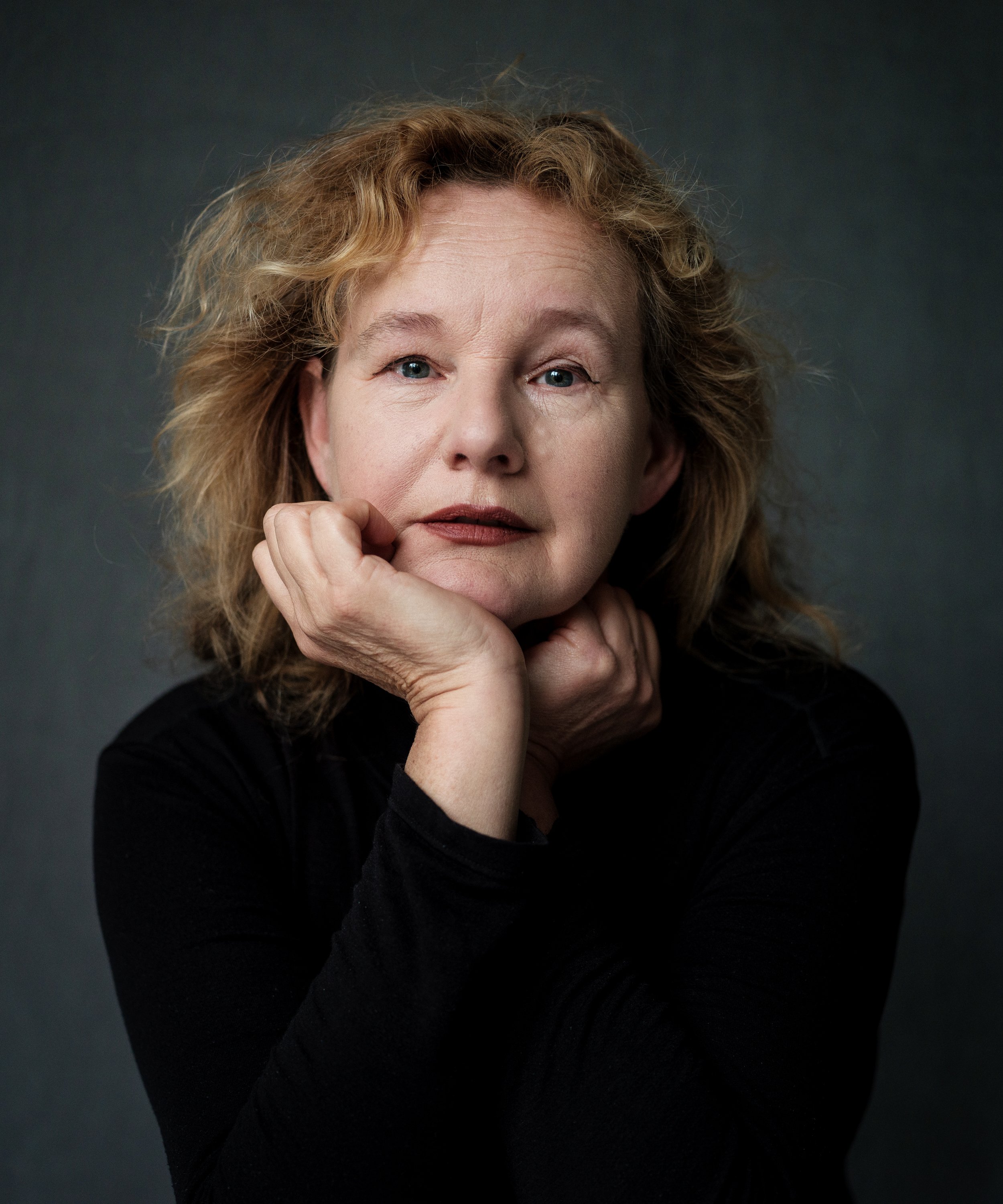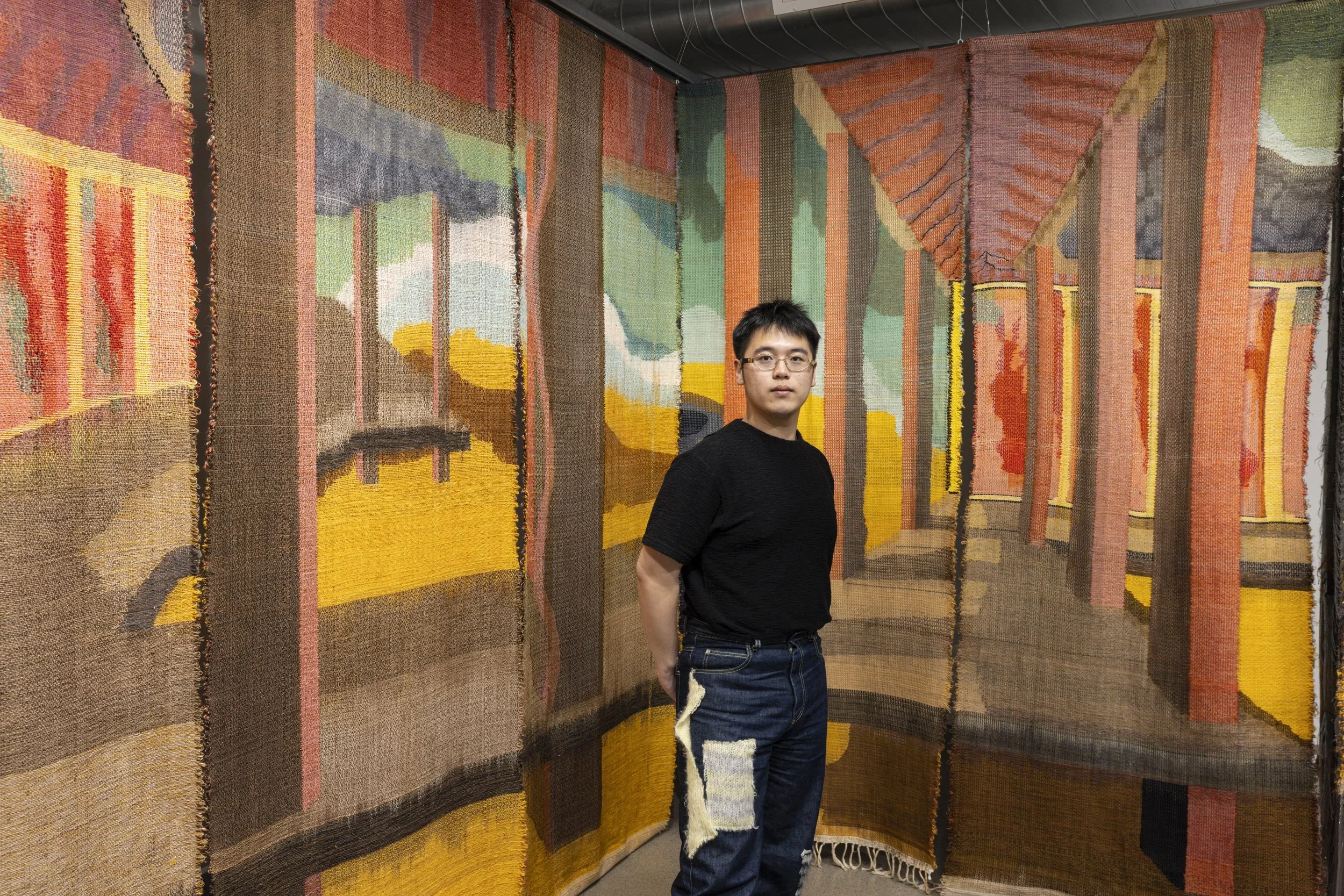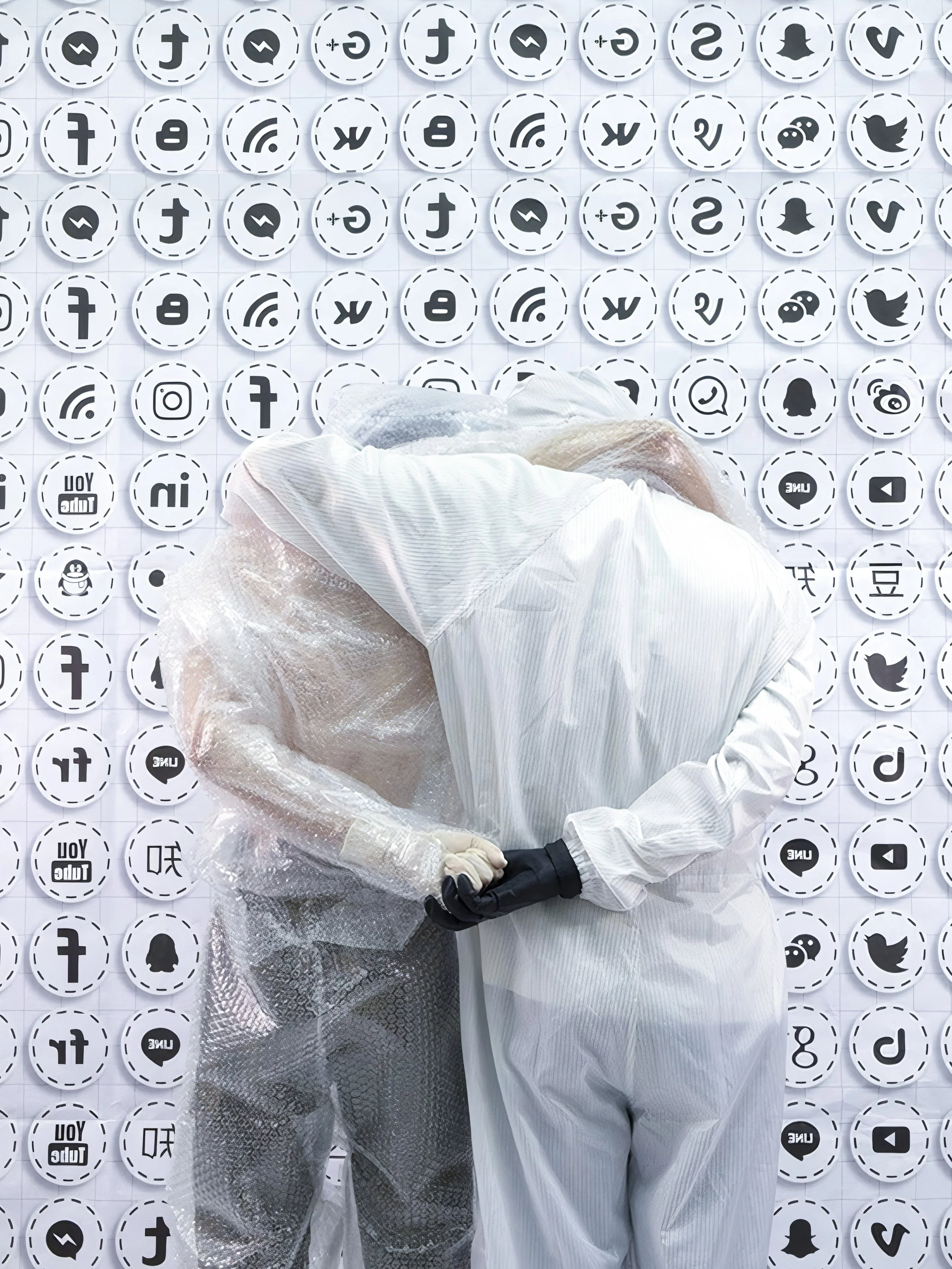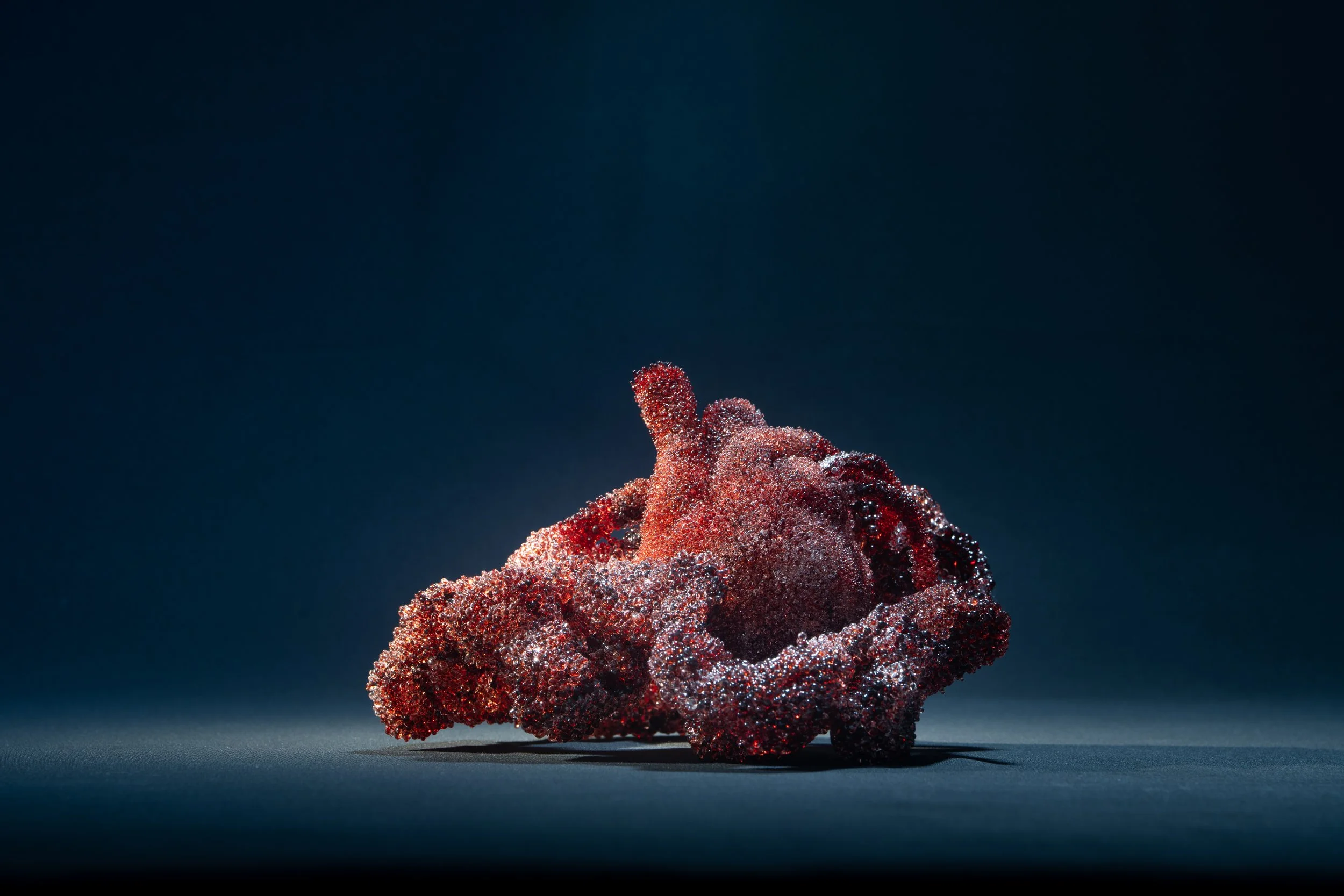10 Questions with Caroline Kampfraath
Al-Tiba9 Art Magazine ISSUE13 | Featured Artist
Caroline Kampfraath is a Dutch sculptor from Amsterdam. Her works consist primarily of elements that she fuses into the total artwork, often thematic pieces and installations. According to Caroline, each work needs its own material, which she imposes quite some challenges on herself. In her visual language, Caroline often uses symbols such as engorges veins, dead dogs, or kidney-shaped dishes. These sometimes-enigmatic elements give her works a surreal atmosphere. In the execution of her work, she uses materials as diverse as natural resin, clay, flax, artificial resin, wool, lead plaster, glass, bronze, and stone.
Caroline Kampfraath - Portrait
ARTIST STATEMENT
Caroline is socially driven, both as a person and as an artist. In her work, she highlights the urgency and impact of global crises, which are currently upon us and permeate our collective consciousness. Her Dead Dogs Envelope heralded the fragmentation and loneliness that social media often create. Her installation, The Trees Will Weep Upon Us, We'll be Fossils by Then, an installation she showed at the 2017 Venice Biennale, highlighted mankind's careless neglect of the environment; humanity is making itself disappear, all that remains of human civilization are a few broken bottles.
Caroline Kampfraath with The Trees will Weep Upon Us, natural resin, metal, 400x200x200 cm © Caroline Kampfraath
A Day in the Woods | Project Statement
The cans are from all over the world, carrying herbs and tea. Like children living far away from their homeland, they left for many reasons, like war and poverty. They go to school, play together, and adapt to a new life. They leave not only their culture but also the landscape, the scents, and the atmosphere they grew up in, and that is still in them — like an untold story.
A day in the Woods, Herbs and food cans, wax and animal skin, 160x45x220 cm, 2019 © Caroline Kampfraath | Ph. Bo Bolderink
Get your limited edition copy now
INTERVIEW
Please introduce yourself to our readers. Who are you, and what do you do?
I am Caroline Kampfraath, a lyrical-conceptual Dutch sculptor. I make sculptures, installations, and sketches. I create autonomous work, and I work on commission. I exhibit, and I give lectures.
When did you decide to become an artist? And what do you wish you knew about contemporary art before you got started?
I knew I wanted to be an artist when I was 17 or 18. My father was on the board of an institute for young contemporary artists, and so I met several of them and got to know their work and lifestyle. I visited museums. So, I had a reasonable clue before I became an artist myself. But my parents thought it better I learn a traditional profession first. I studied law and decided halfway to go to art school anyway, so without knowing exactly how, I decided to be an artist. I learned to be an artist by doing it.
Dead Dogs Envelop, porcelain plaster, metal, 300x180x20 cm © Caroline Kampfraath
You primarily work with sculpture and installation. What inspired you to choose these mediums? And what do you like about them?
I had been making sketches and collages. It was at art school that I learned three-dimensional modeling - after the first lesson, I literally couldn’t sleep at night. I just couldn’t stop thinking about it. I wanted to use materials other than clay. After the second year, I had the possibility to go to Italy. I learned to work with different kinds of stone and spent all my time with fellow artists amidst famous studios around the corner. It was exciting.
From the start, I didn’t want to make one piece but a combination of pieces since I felt they together would tell a stronger story. Inspired by the hieroglyphs where several symbols create the meaning. Thus it gradually became an installation. I saw the work of Isamu Noguchi, Louise Bourgeois, and the early works of Anish Kapoor. So inspiring.
According to your biography, you believe that “each work needs its own material.” How do you choose these materials, and how do you locate them?
In my work, I am a storyteller. I start with a conceptual idea in my head, a vision that keeps coming and that requires a certain texture, color, touch, wear, and so on. Like in The Trees Weep Upon Us, We’ll be Fossils by Then, where it is about our disturbed balance with nature, I thought I needed natural resin to get the atmosphere I wanted. That was clear. But I had no clue how to use the material. The Trees Weep Upon Us, therefore, posed great challenges. But I love to take these on, to create new techniques, and I continue until it is done. It is the only option. The story must be told, and the piece follows.
In your work, you reflect on global crises and issues that we must collectively address as a society. What messages do you want to convey to your viewers?
I do not necessarily want to make a statement. I just want to express what keeps me busy. I want to better understand life, understand what I see around me and what I feel about it. What I cannot say in words not only plays in my mind but it also touches my senses. That is also why I use particular materials. For instance, A Day in the Woods is about children fleeing to other countries. The cans reflect their feeling. There are different layers in my work, and hence more possibilities for viewers to reflect on it.
A day in the Woods, Herbs and food cans, wax and animal skin, 160x45x220 cm, 2019 © Caroline Kampfraath | Ph. Bo Bolderink
A day in the Woods (detail), Herbs and food cans, wax and animal skin, 160x45x220 cm, 2019 © Caroline Kampfraath | Ph. Bo Bolderink
Returning to your biography, you mention how you use symbols and other elements to create surreal atmospheres. Can you tell us more about this practice? Where do you draw inspiration, and how do you choose the symbols you want to incorporate in your work?
The meaning of daily life objects can change when you put them together with other objects or forms, or if you change the material they are made of. That intrigues me, like the kidney-shaped hospital trays made of polyester in Hysteria or the dead dogs in Dead Dog Envelope made of porcelain plaster combined with a big metal envelope. On their own, there is instant recognition, but in the context of an installation, objects get another meaning. They interact with other forms, they become symbols, and together, they tell their own story, the story I want to tell.
You use different mediums, techniques, and materials in your work. But is there anything else you would like to experiment with?
That will no doubt happen. But I cannot predict it, and I like it that way. I like the process that creates concreteness out of an idea, where I go forward and backward in my mind until it fits.
Hysteria, clay, polyester, table, 200x60x80 cm © Caroline Kampfraath
The Tentacles of the River, polyester, natural resin, 160x160x300 cm © Caroline Kampfraath
Geisha, marble, wood, 45x45x80 cm © Caroline Kampfraath
What are you working on now, and what are your plans for the future? Anything exciting you can tell us about?
At the moment, I am working on a commission for three pieces. They will hold large, ancient Chinese stones that I will combine with other materials. One piece will be placed inside a building and two in the adjacent garden to connect the indoor and outdoor spaces. Totally new and very exciting.
In the future, new projects are taking shape, such as presenting my creative process to scientists. At any rate, I seek to challenge myself in the future with experiences that keep me out of my comfort zone.
What do you hope to accomplish this year, both in terms of career goals and personal life?
I will prepare for an artist-in-residence in Japan, where I want to better connect myself with the history of my family. Of course, it would be great to discover new materials in the process.
Finally, where do you see yourself and your work five years from now?
Five years from now, I hope to travel along my path with new possibilities and challenges.




























